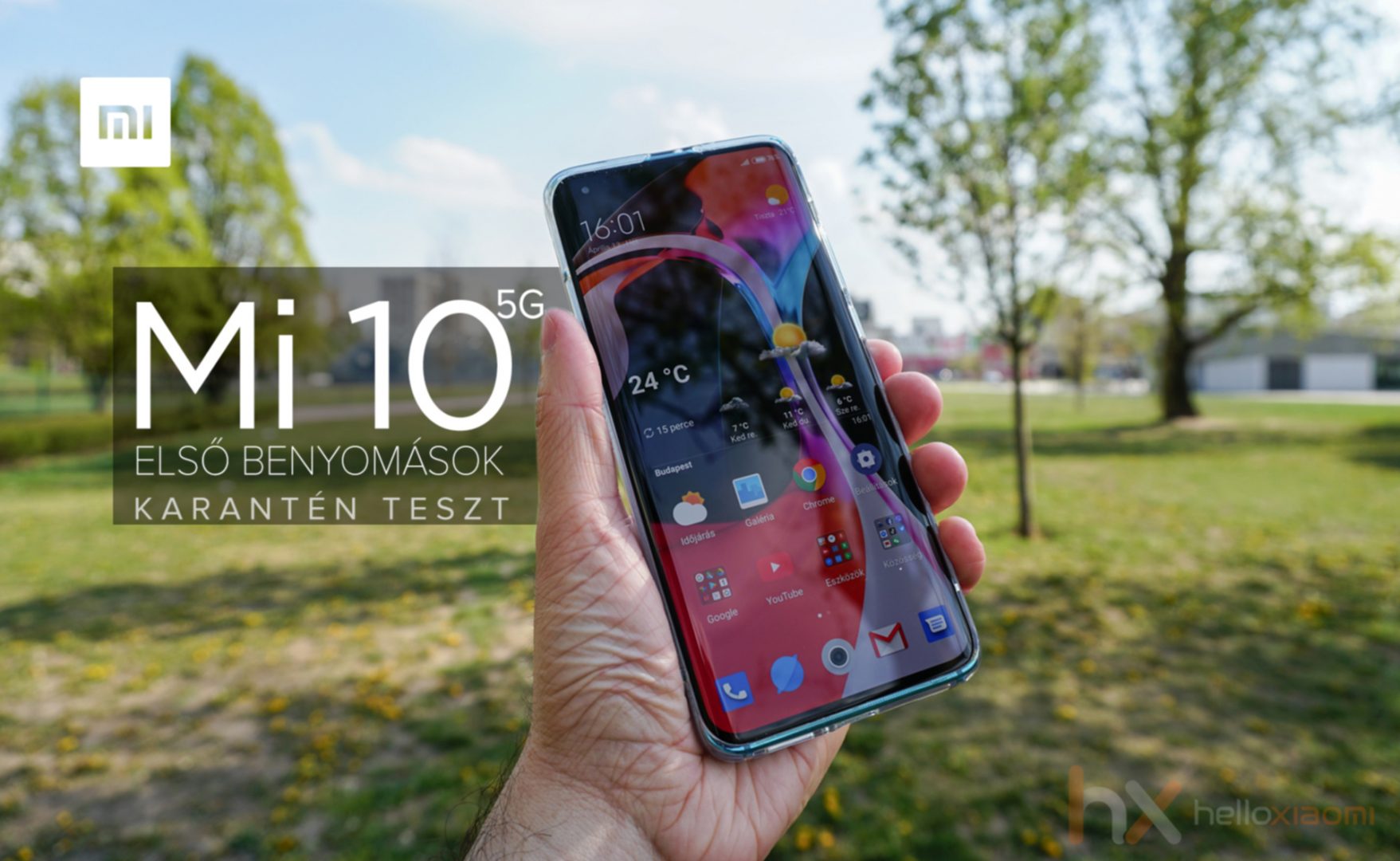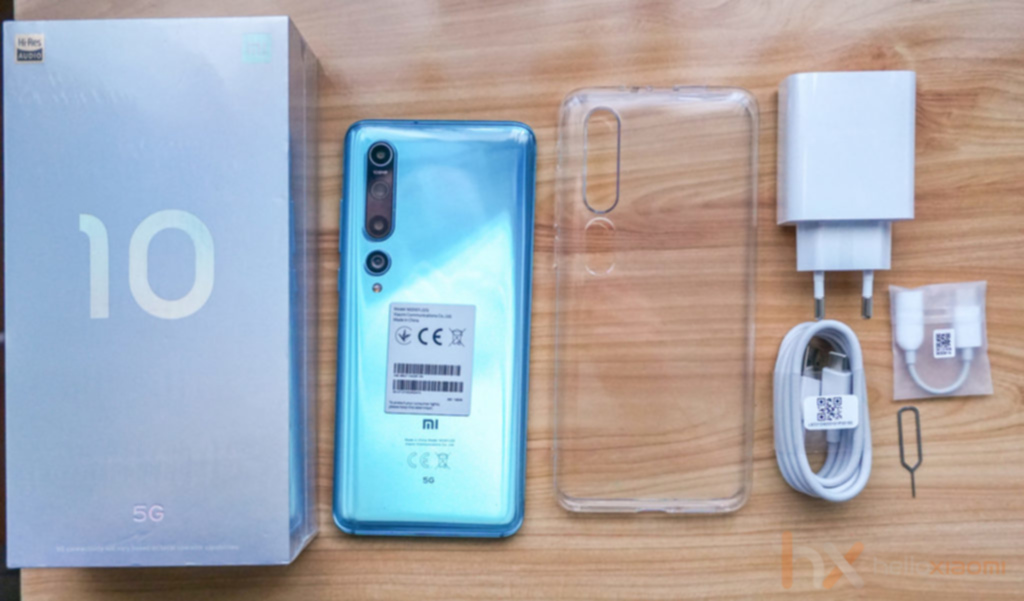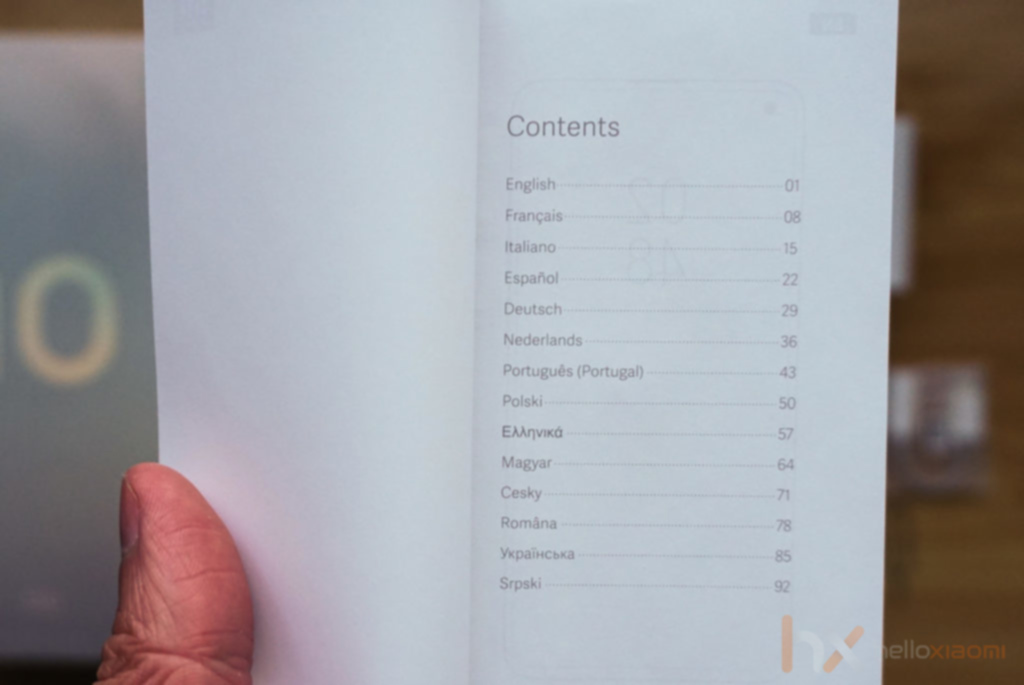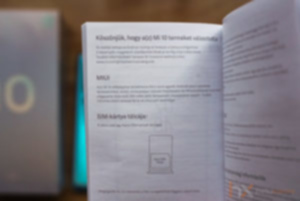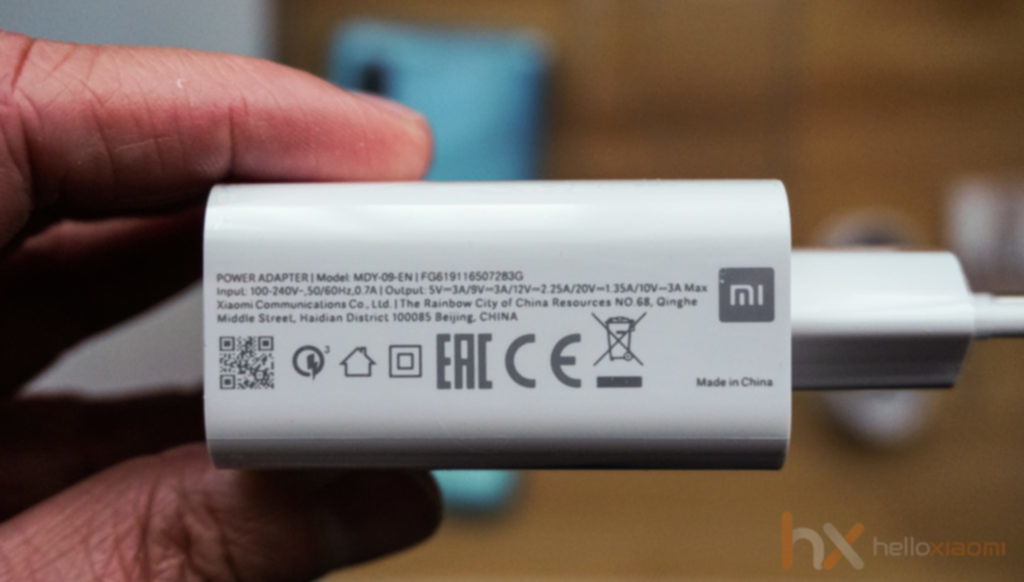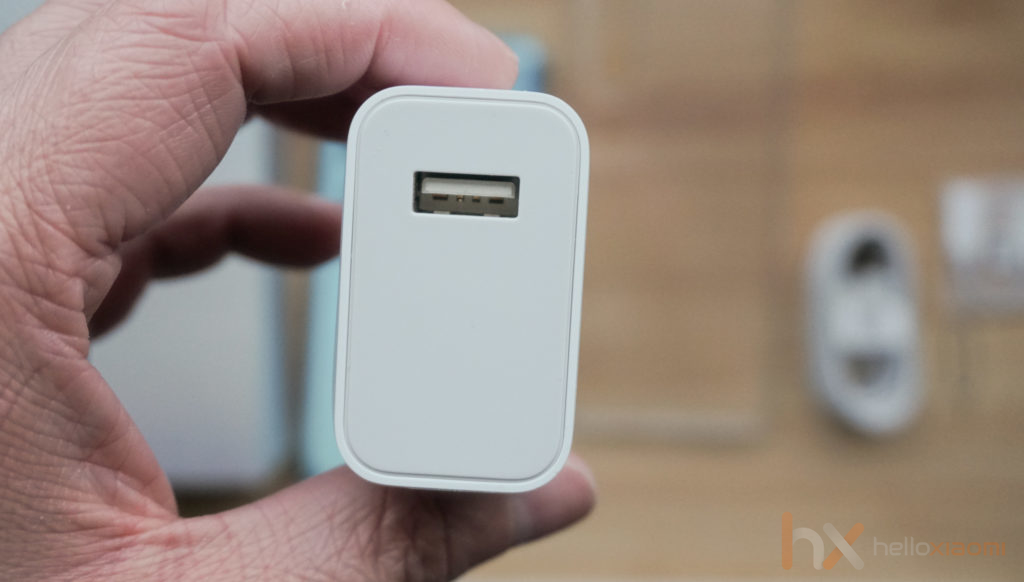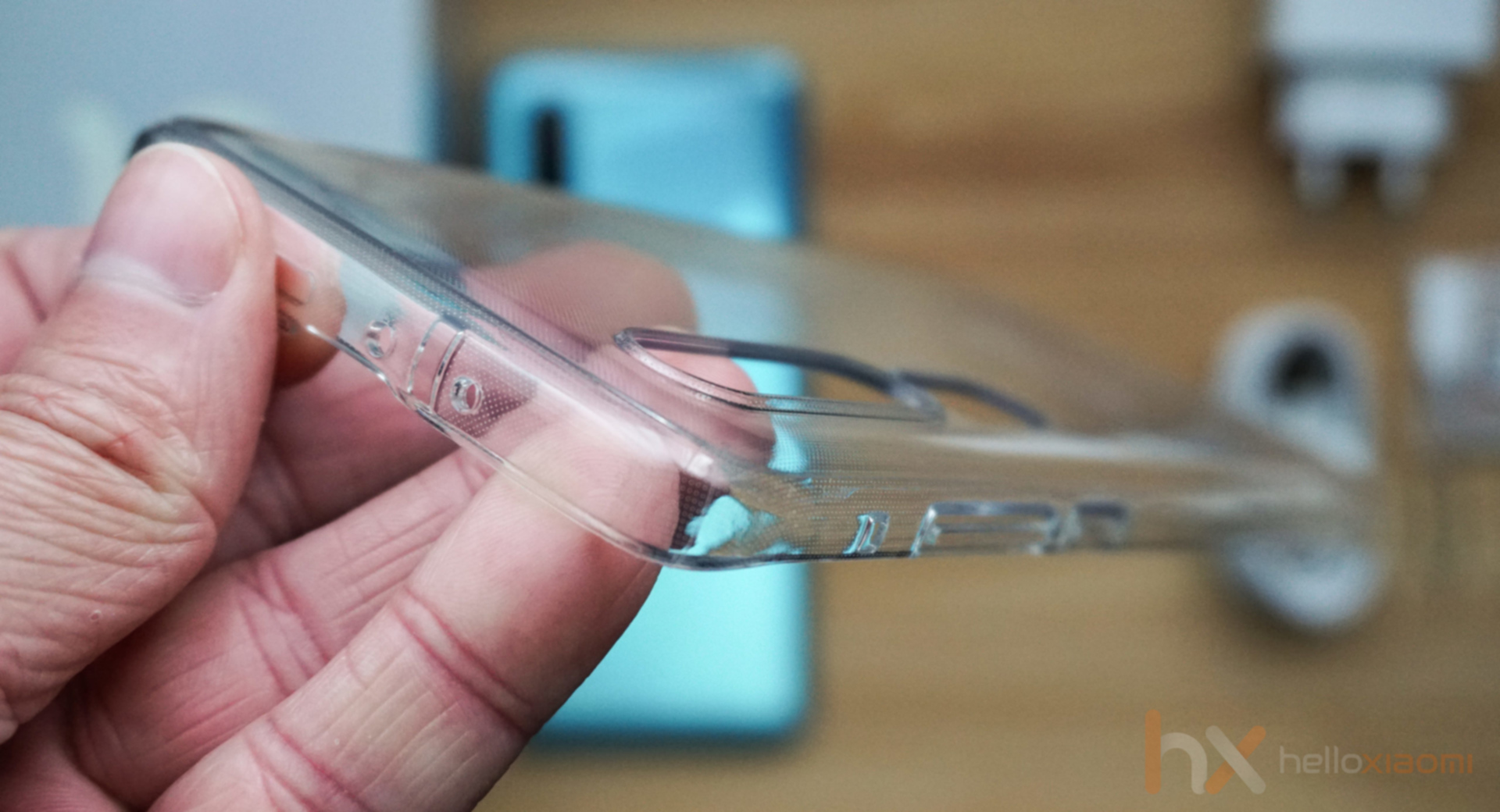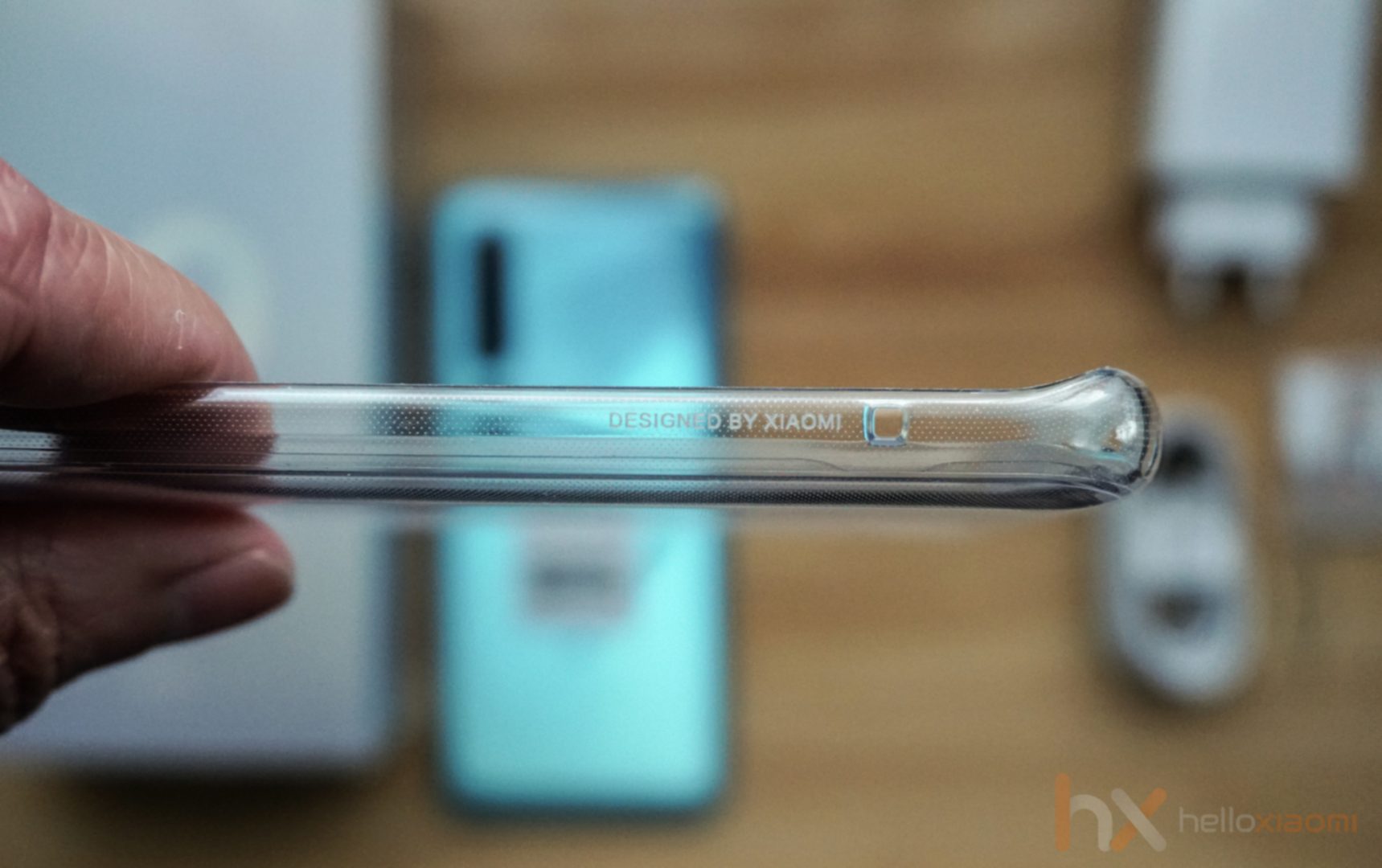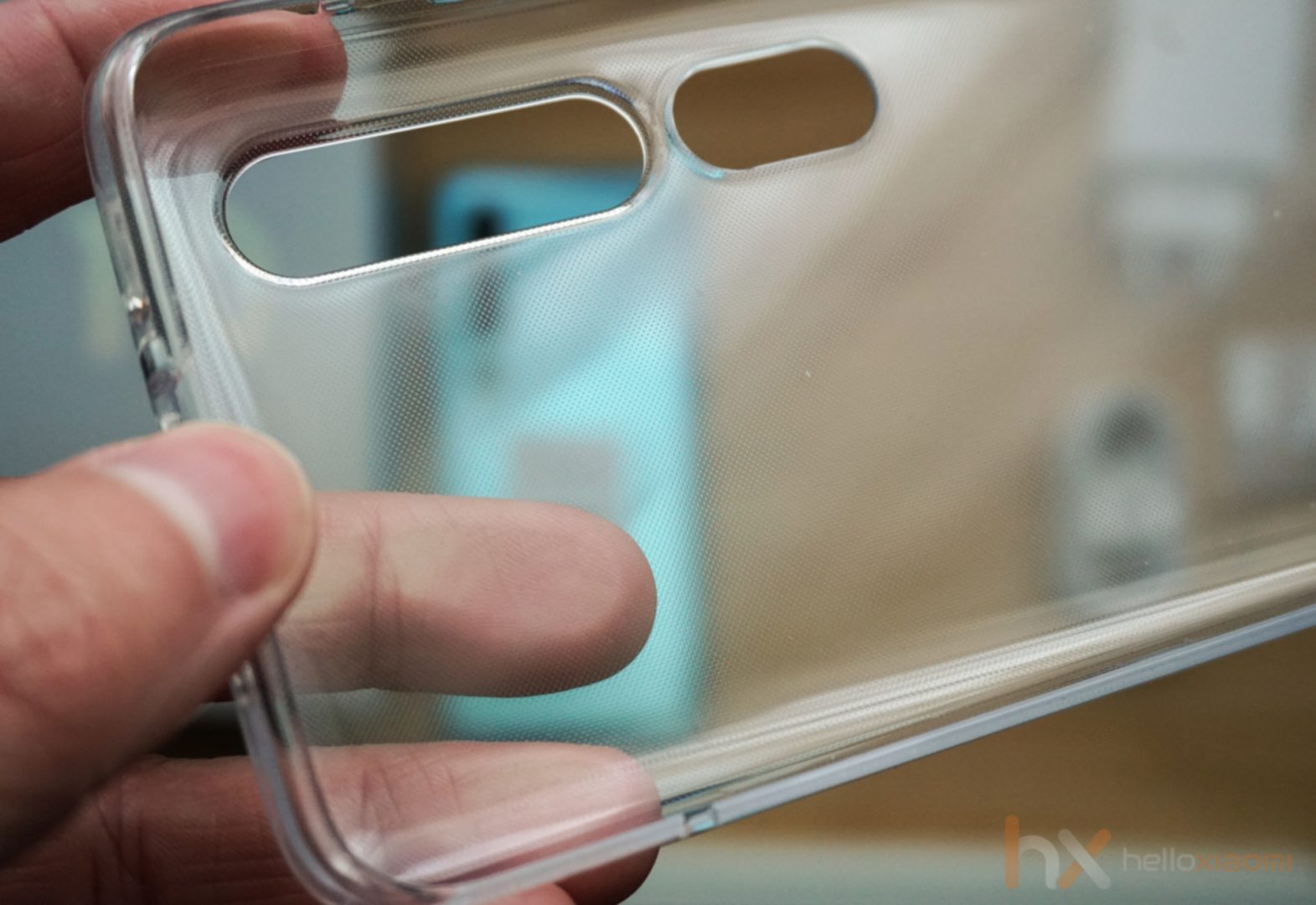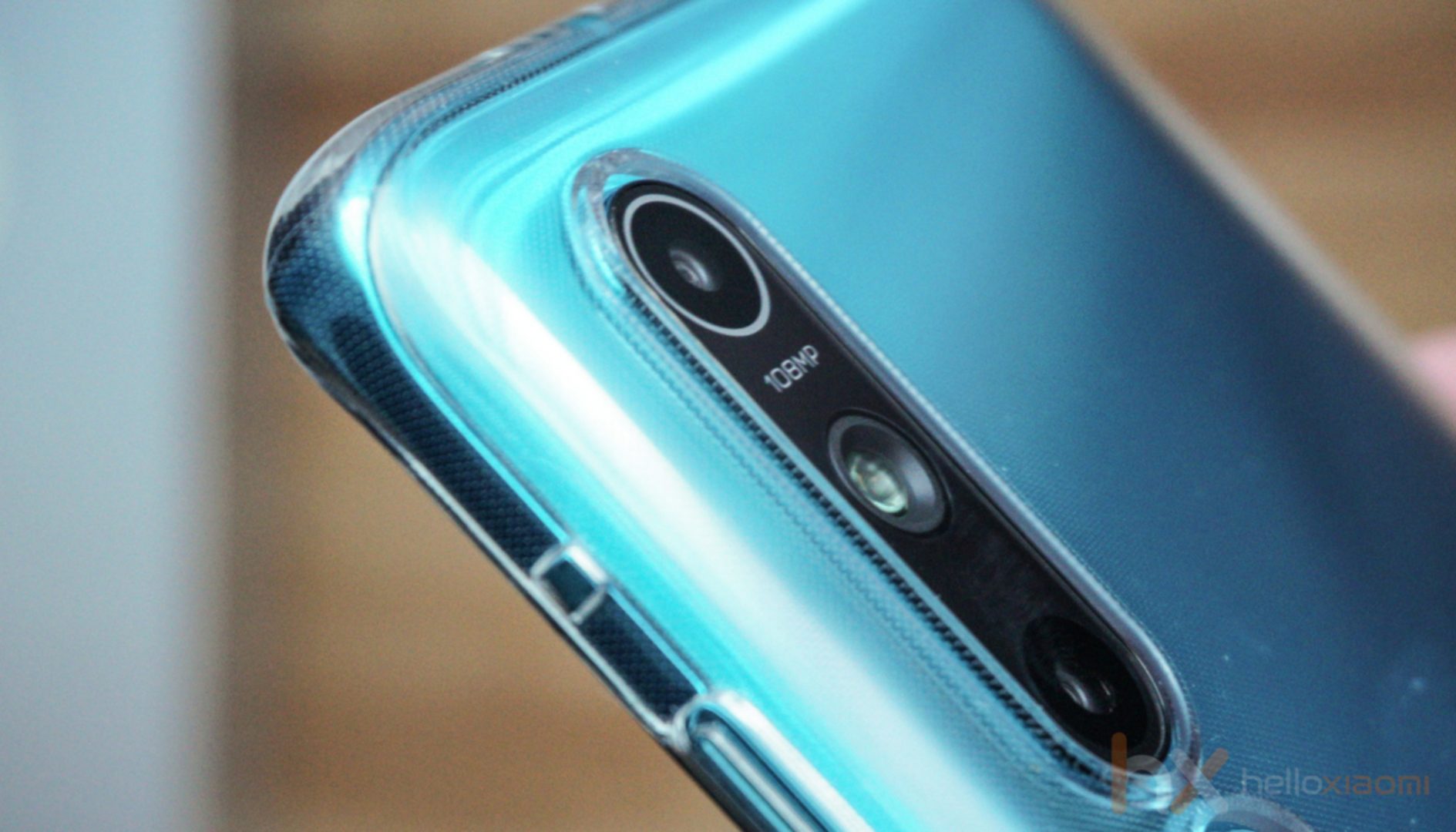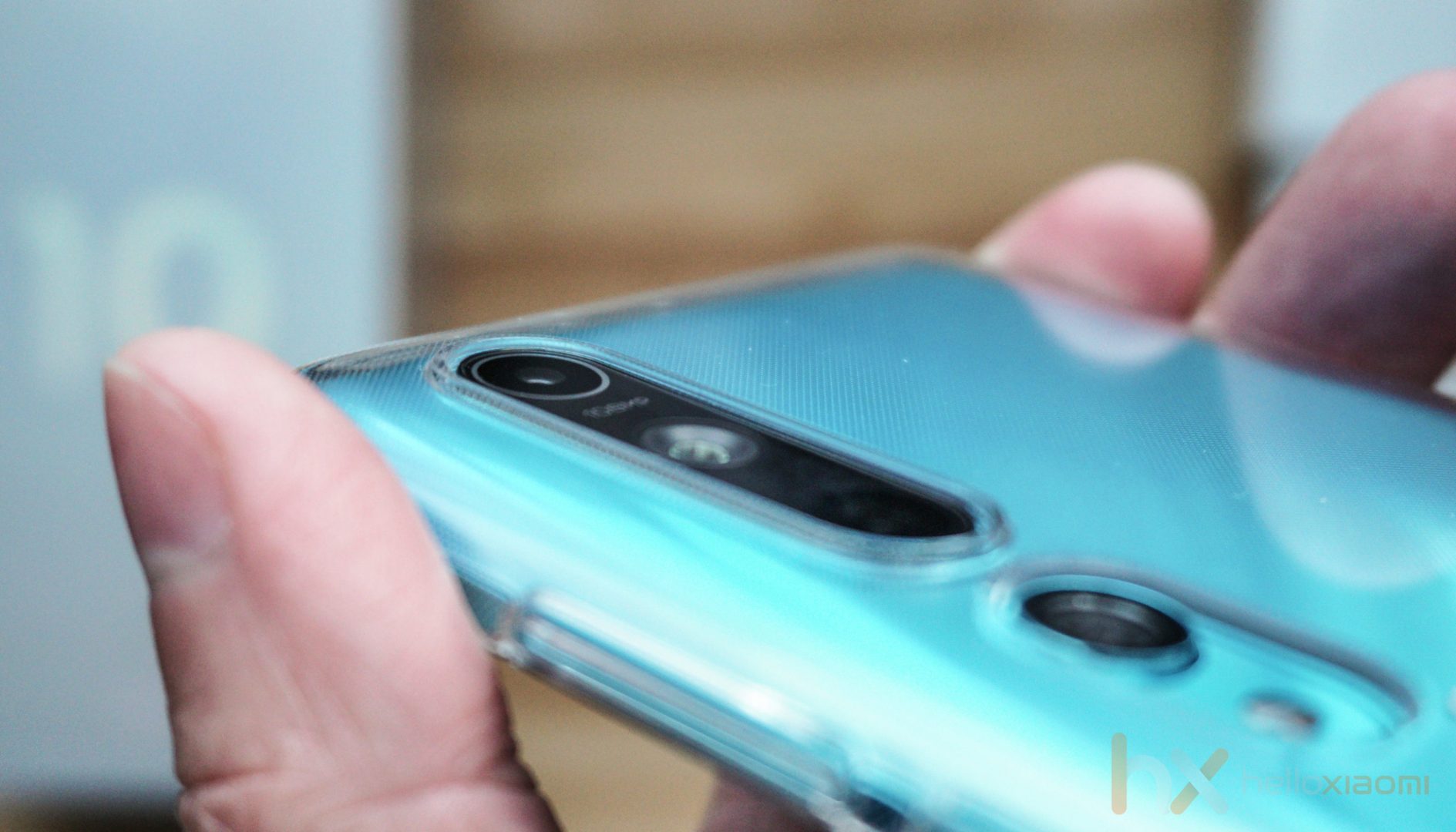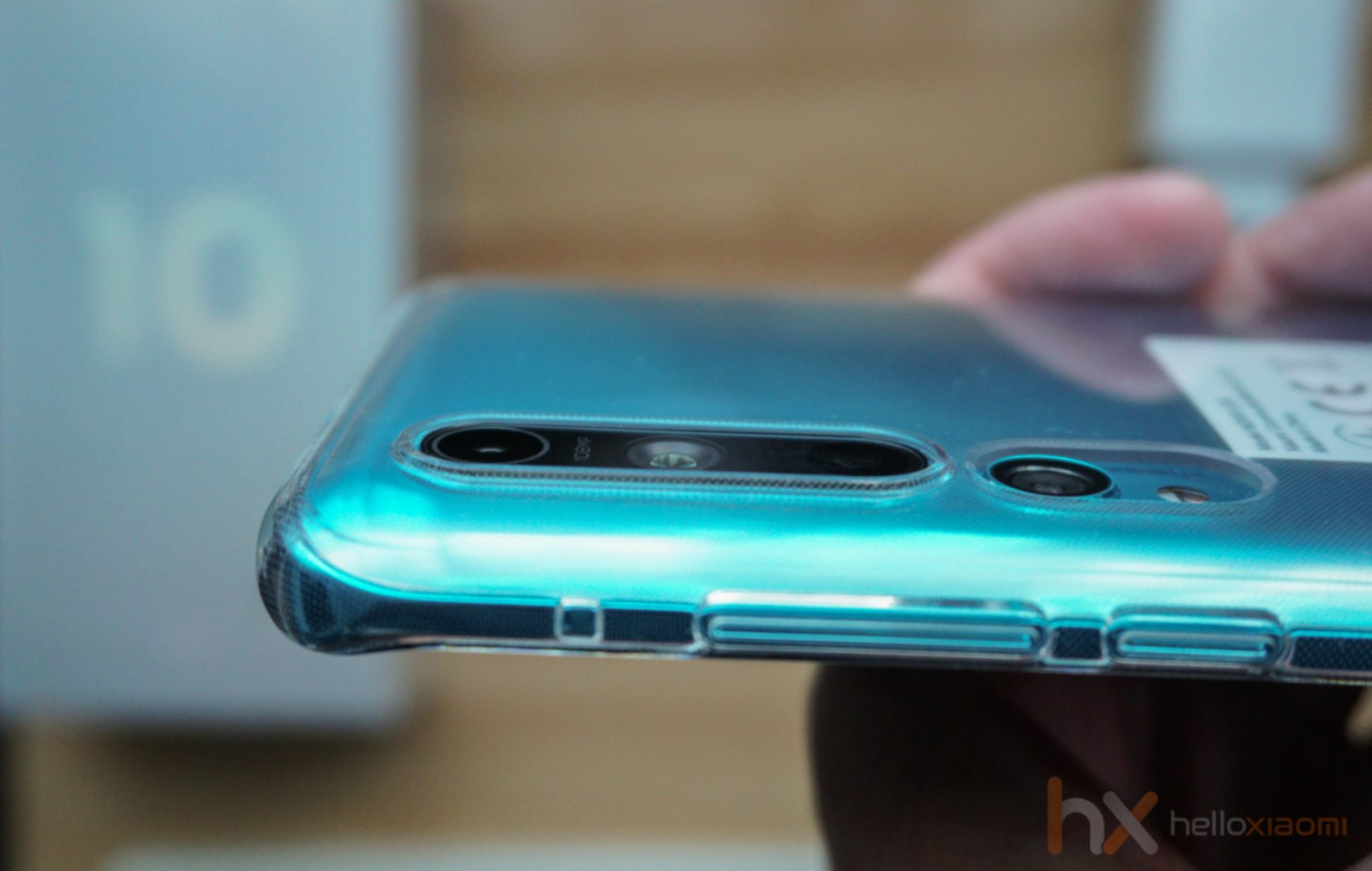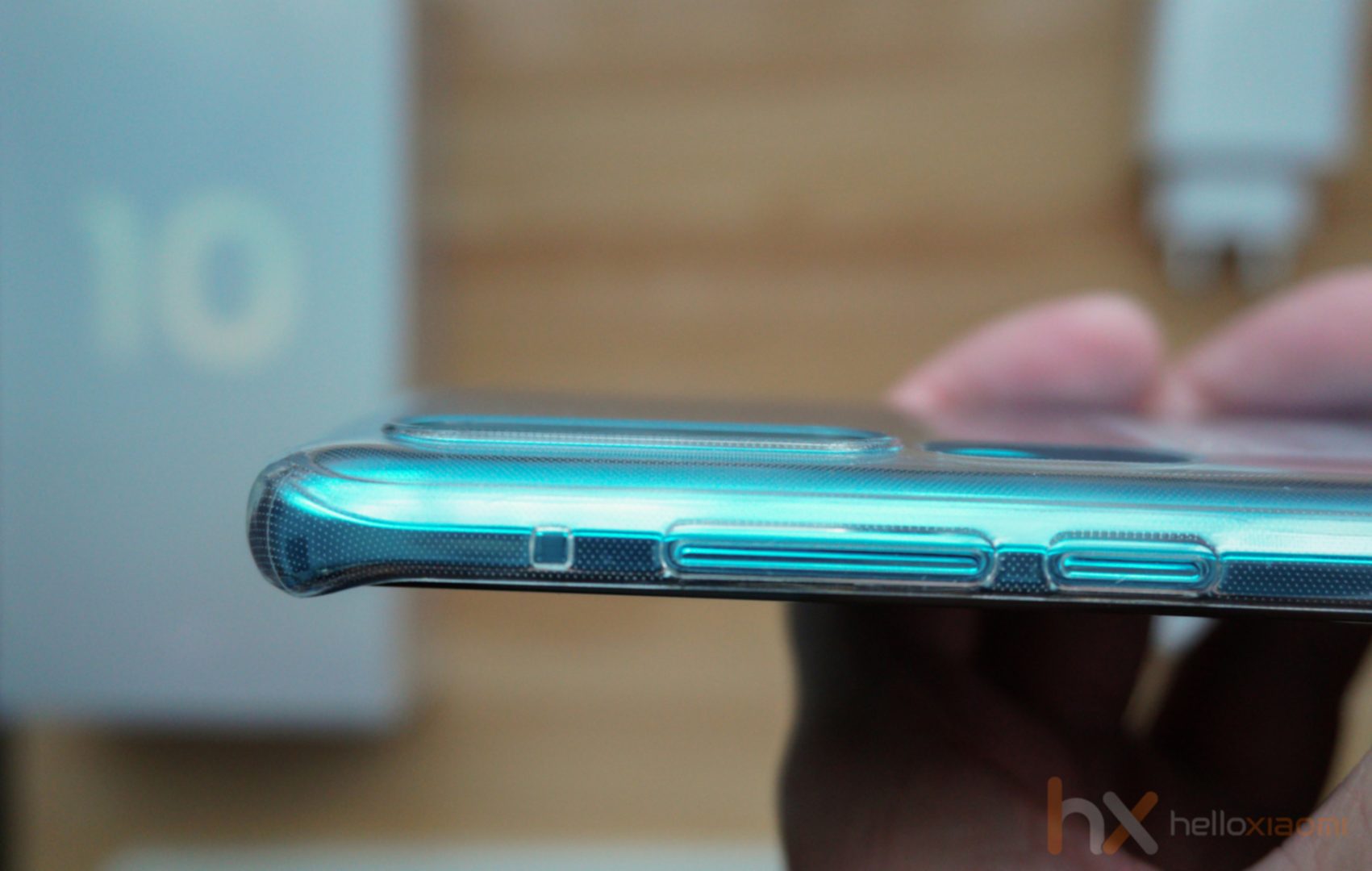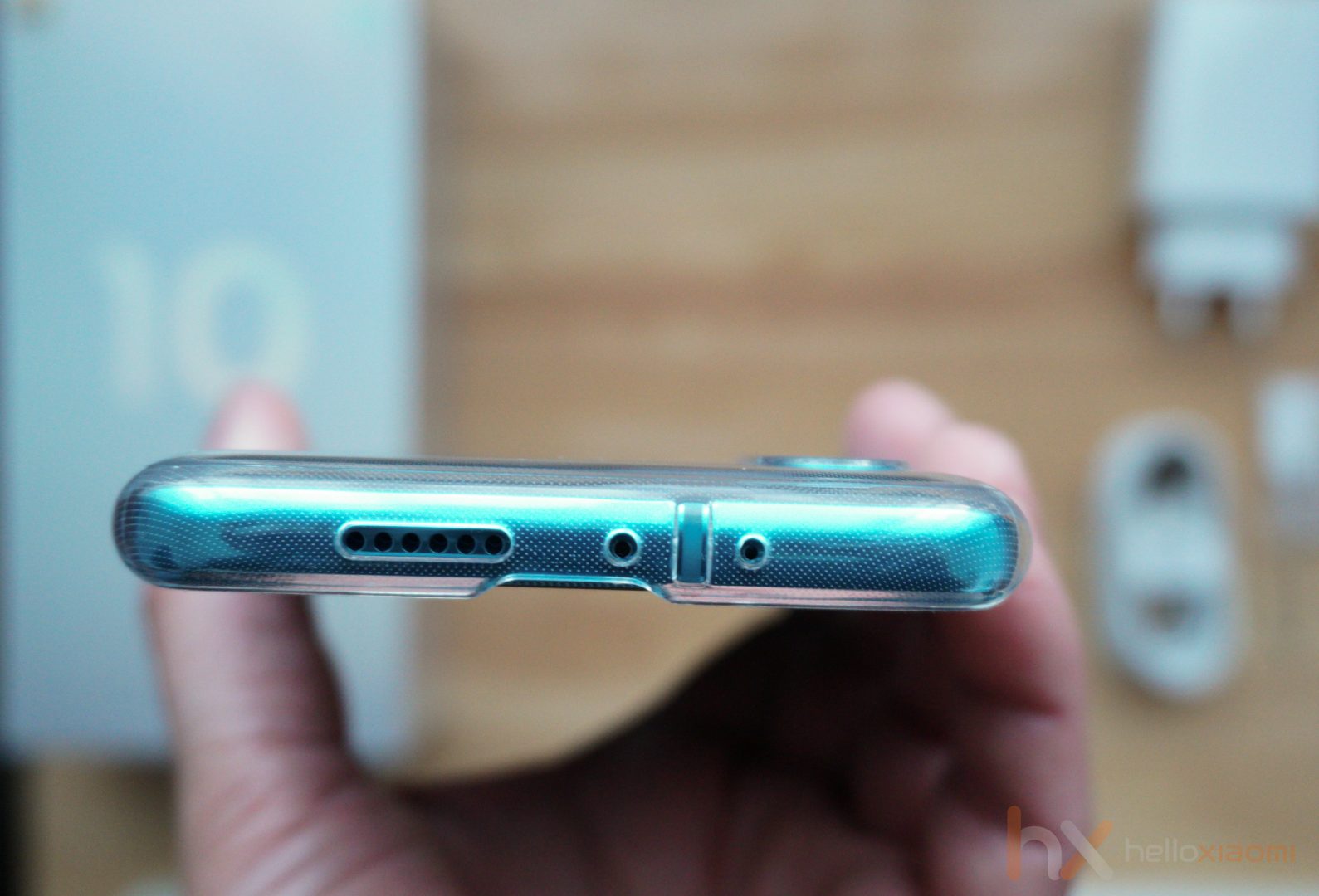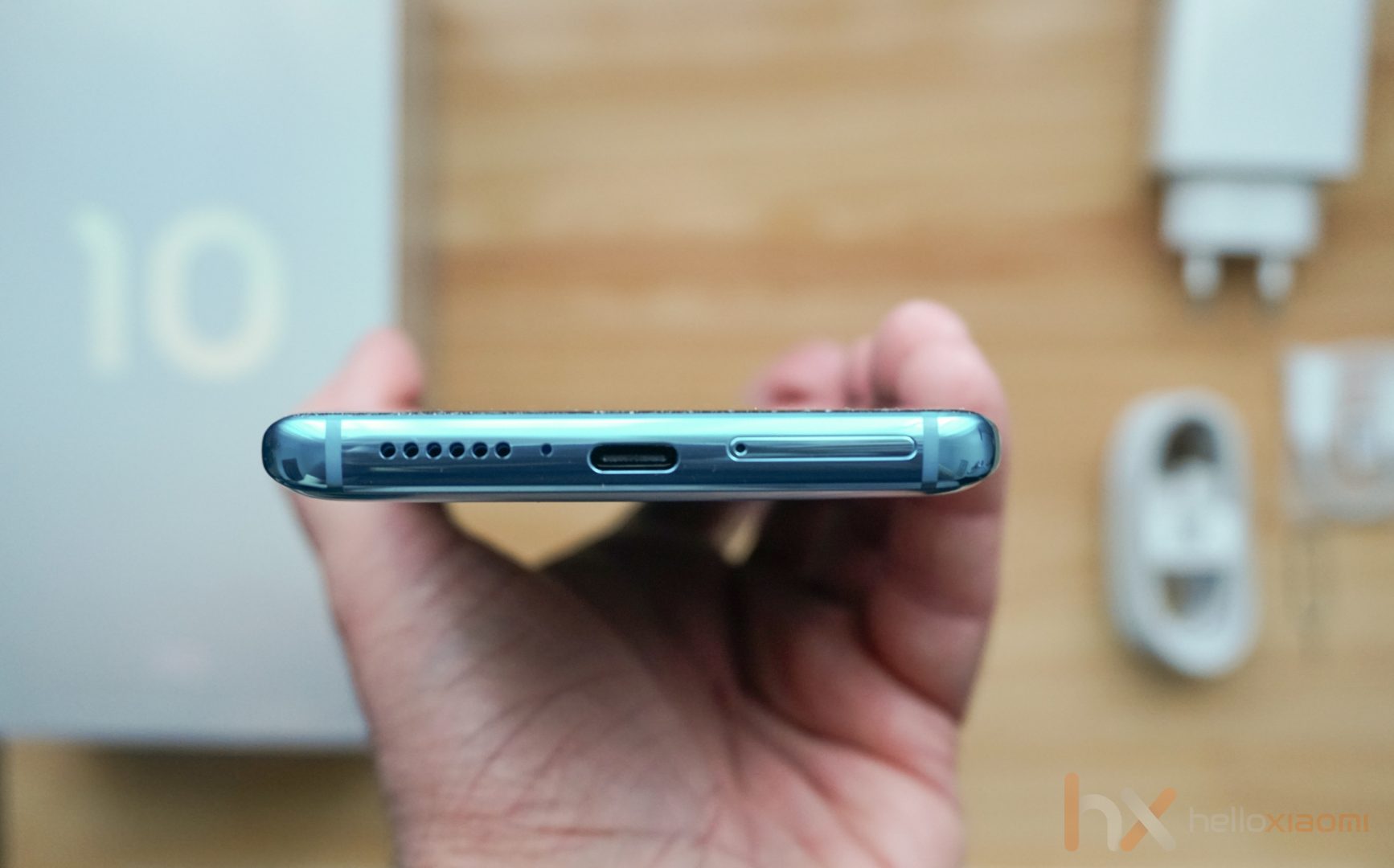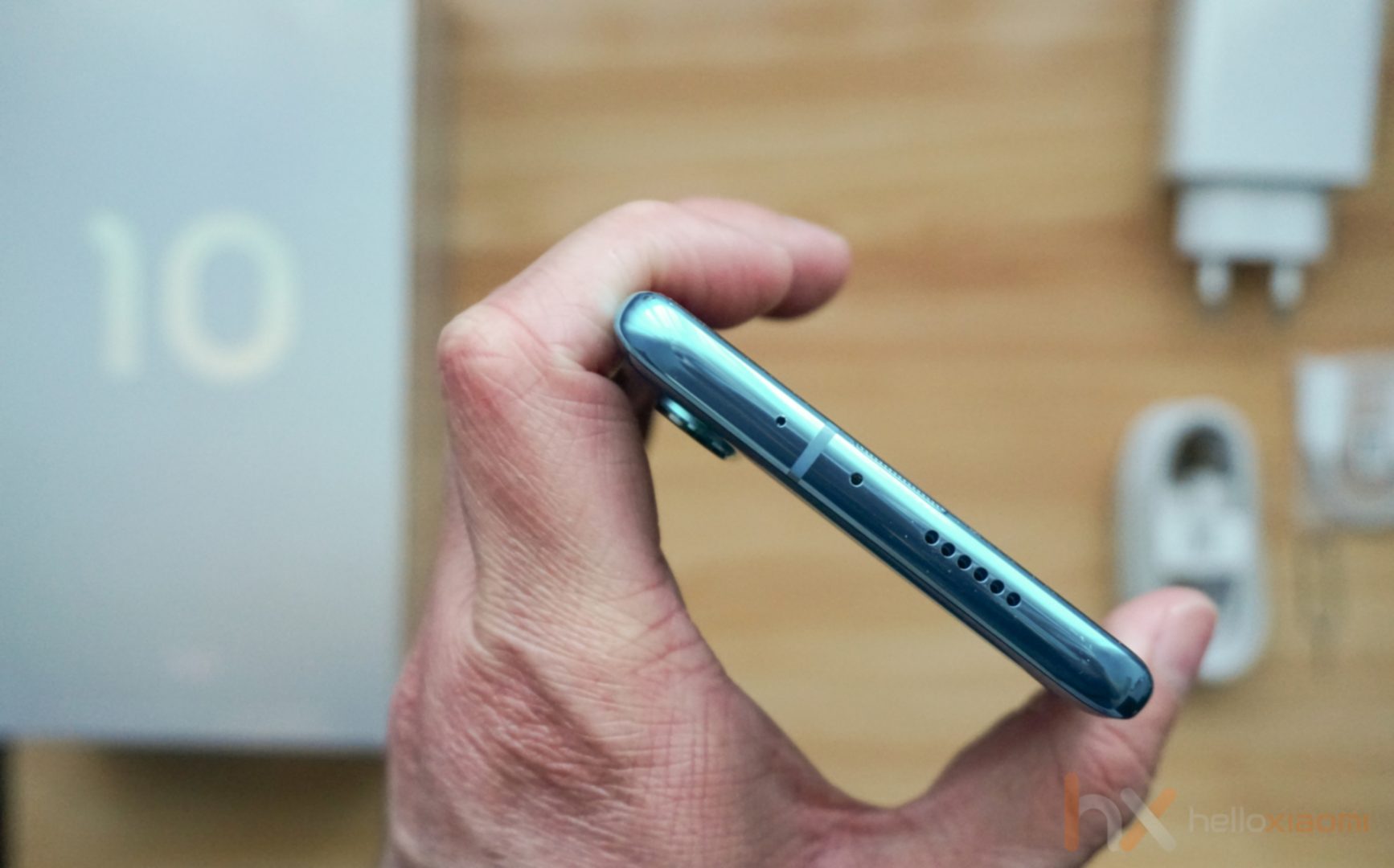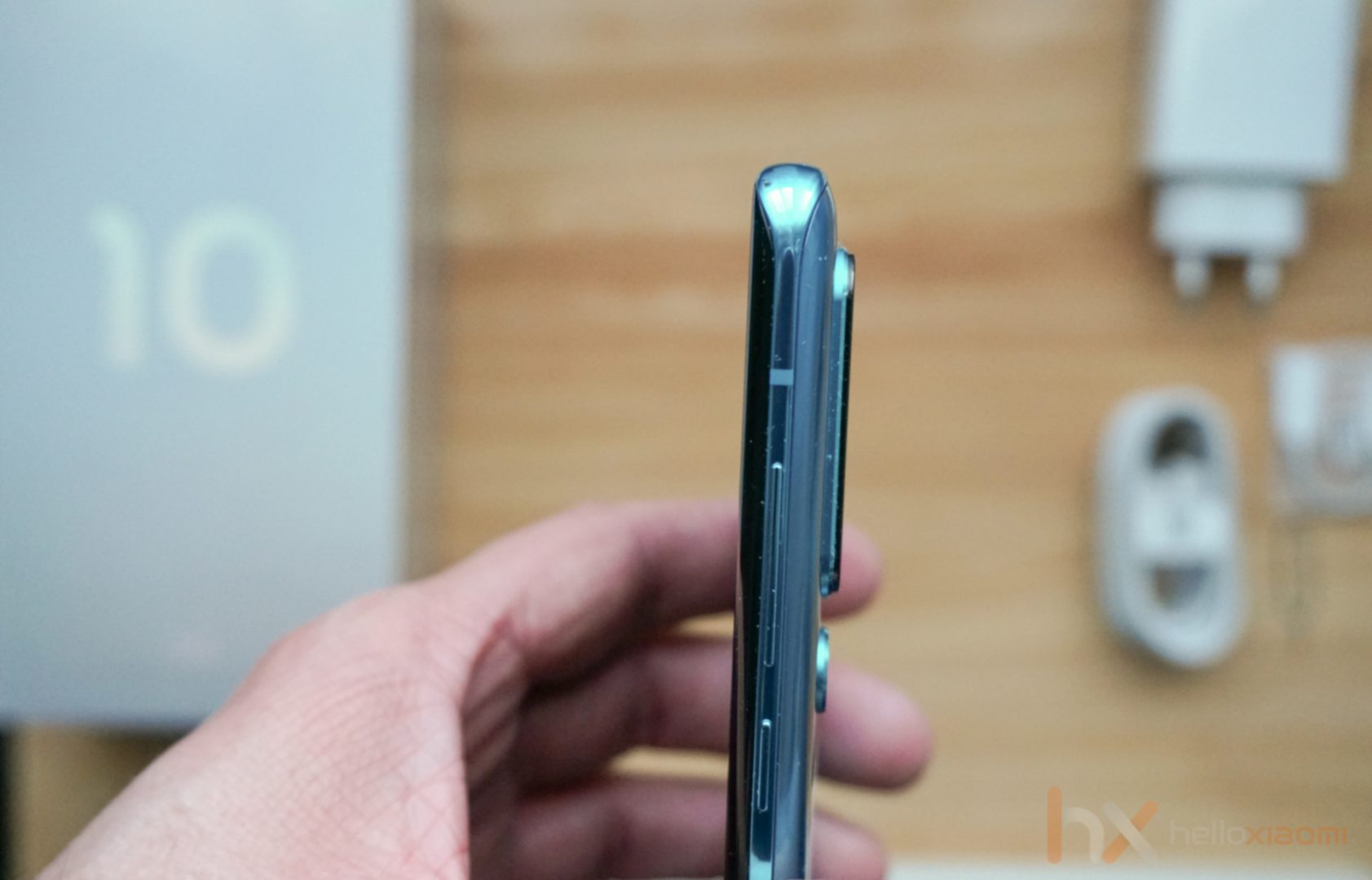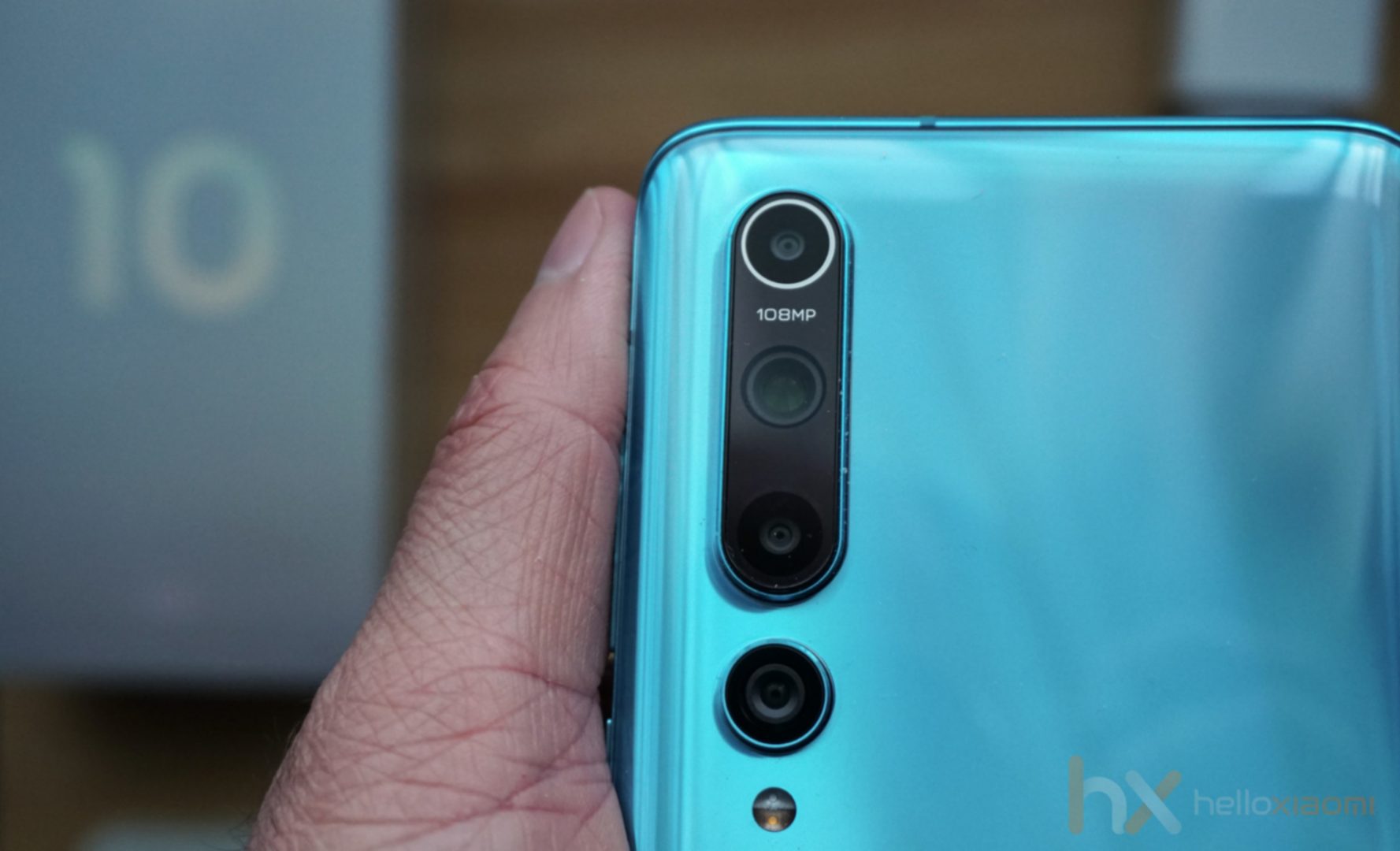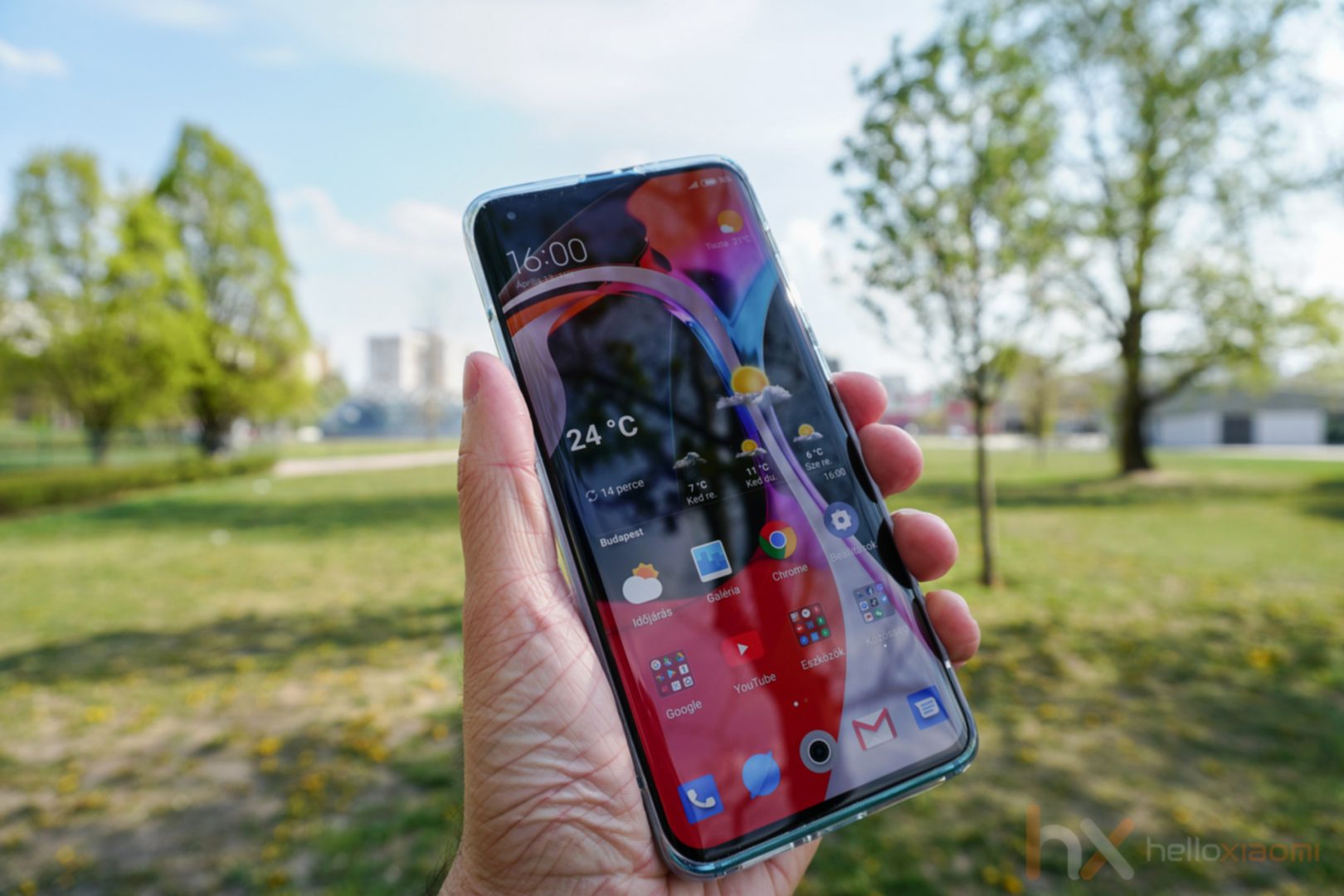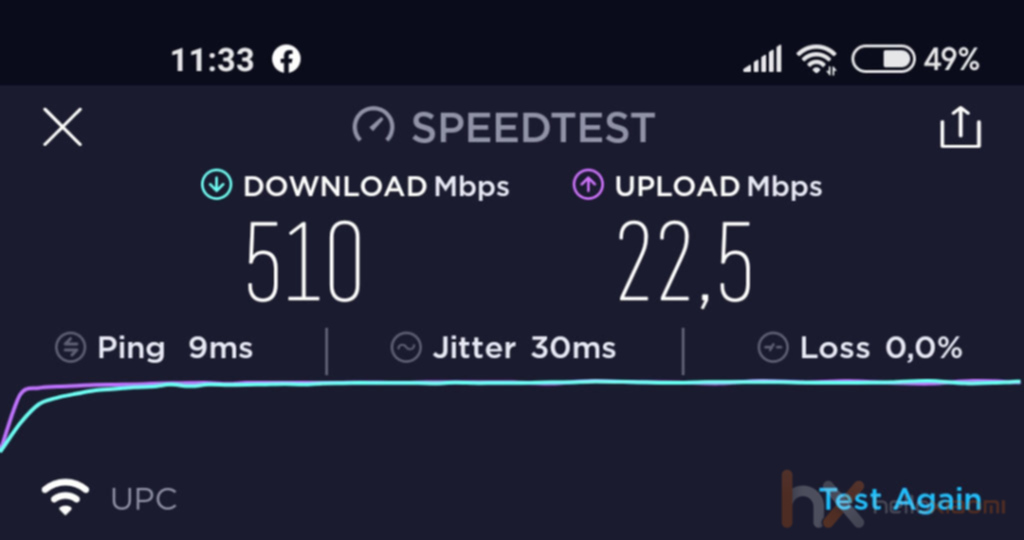Xiaomi is set to make an even bigger splash on the flagship front in 2020 than in recent years. The previous "well-priced device" strategy has been discarded, and instead a business plan for a truly quality product at a higher - profitable - price has been introduced. After I received the Mi 10 - one of the first - I quickly tried out what a true flagship smartphone can do today.
The Mi 10 series was unveiled in China on 13 February 2020 at a limited online event. Read more by clicking here you can read.
Two models, the Mi 10 and Mi 10 Pro, were launched in China back in February, but a third version was also planned for the European market. Xiaomi's original idea was to unveil the Global version at MWC 2020 in Spain, amidst enhanced security measures. However, the event was eventually cancelled by the organiser itself (GSMA) due to the coronavirus situation. Xiaomi held the online event just over a month later, on 27 March.
For the international market, as it turned out, three models were planned, not two. In addition to the Mi 10 and Mi 10 Pro, the Mi 10 Lite is coming soon. Although, as usual, the specifications of the international range have been slightly tweaked, it still remains a competitive alternative on the market.
Following the launch, the first test example of the Xiaomishop courtesy of.
In the first part of my quarantine test, I'll unbox and take a closer look at the device, and highlight the first noticeable change from the Mi 9. I'll describe what I don't like about the phone, and before my final conclusions emerge from the following parts, I'll also highlight the parts I like.
Mi 10 5G quarantine test part 1
On 10 April 2020, I found out that I would be the first to get a closer look at Mi 10. I have to admit, the Mi range has been a favourite of mine for years, and every year I look forward to seeing what the manufacturer comes up with to wow me again. The voluntary quarantine has presented me with several challenges. Since I'm also planning video content, I had to manage the setup without additional lighting, away from the furnished studio, alone. Luckily, some of the technology is provided, I just need to put the concept together. You will see the end result of this soon on our YouTube channel.
Mi 10 unpacking
The box doesn't contain many extras, except of course the Mi 10, a reinforced silicone case, USB-C cable, SIM pin, a USB-C to 3.5mm jack adapter, and of course a 30W charging head. As the Mi 10 5G can charge up to this maximum, we can also ensure maximum charging power with the included charging head.
You will also receive a Getting Started Guide in Hungarian and a warranty information leaflet.
The 30W charging head
The included silicone case is similar to the one that comes with the Mi Note 10. It's much stiffer than the one packaged with the Mi 9, so it doesn't squeak or separate from the edge of the device in the middle. It provides a much more stable grip and is almost a must have. The surface is point-roughened, giving a slightly matte effect, providing a good stable grip. It also does not stick to the glass cover of the device in spots. On the side edges of the device, the case bends up just enough not to cover the active part of the AMOLED display, but it is noticeably out of plane on the bottom and top. At the bottom, this is distracting because if you set the controls to "Hand gesture" (gesture), it makes it difficult to swipe up from the bottom.
However, the device does not look robust even with the case. The camera unit, which protrudes well at the back, is adequately protected, although it doesn't completely eliminate the wobble when used on a table.
Since the Mi 10 again has a Hall sensor, you can get either a factory or aftermarket smart case.
Mi 10 - Design
The Mi 10 5G and Mi 10 Pro 5G are identical on the outside.
Size and weight:
Height: 162.5mm
Width: 74.8mm
Thickness: 8.96mm
Weight: 208g
The Mi Note 10 is thinner than its uncomfortable 9.67mm thickness, but it's bigger in both width and length. And they weigh the same, with all three models weighing in at 208g. While the Mi Note 10 has a 6.47″ display and 5260mAh battery, the Mi 10 has a 6.67″ display and 4780mAh battery, and the Mi 10 Pro has a 4500mAh battery with the same display size.
If you look at the pictures above, you can see all the details. On the right is the usual pair of volume buttons, with the power button underneath. At the bottom is the SIM tray, which only accepts a single nano SIM card (although the Chinese version is dual SIM, the Global version omits the second reader, only the tray size remains the same, limited to one card)
Even though the "SIM1" label is there, you can't use two cards with a replacement tray, just by buying the Chinese version. The exact reason for the single SIM limitation has not been revealed, but it is likely that the Mi 10 series is planned to be sold through service providers.
At the bottom centre is the USB-C connector, which charges the Mi 10 at 30W and the Mi 10 Pro at 50W. Next to it, on the left, is the speech microphone and one half of the now real stereo speaker pair. On the left side, there are 2 antenna slots in total, no AI button and no SIM tray (like on the Mi 9). Above, however, you can see something more interesting. At first glance, there are 6+2 holes. Of these, the first (from the left) 6 holes are the second half of the stereo speaker pair, which, depending on the horizontal orientation of the phone (i.e. the left and right channels change as you use the phone), is indeed a stereo speaker pair of the same quality. I explain below how good it sounds. The infrared sensor is located almost in the middle of the speaker. It can be used to control any infrared device, from an LED strip to an air conditioner to a TV. To the right of this is the secondary (noise cancelling) microphone.
The selfie camera is mounted in the top left corner of the display, which houses 1 20MP Samsung sensor.
At the back, there's a Samsung sensor (one of the four we know for sure). The two-part camera unit has a 2MP depth sensor at the top, and below that is the 108MP Samsung ISOCELL Bright S5KHMX sensor with 1/1.33" 1.6 μm 4-in-1 Super Pixel technology with ƒ/1.69 aperture and 7 lens elements. Below that is the 2MP macro lens, and at the bottom is a separate 13MP ultra-wide-angle lens. Below that you can see the two-tone LED flash. Interestingly, the extra 2 LED derailleur light used on the Mi Note 10 is no longer used).
Only the 108MP unit has optical stabilisation, which does a great job. There's no information that the camera lenses are protected with sapphire glass, as was done with the Mi 9.
This will make the Mi 10 Pro, where the 4 sensors are positioned like this:
- 8MP hybrid zoom lens for a total of 5x optical, 10x hybrid and 50x digital zoom, supported by optical stabilisation
- 12MP resolution for portraits
- 108MP Sony sensor is the third also supported by OIS with 8 lens elements
- and the fourth is a 20MP ultra-wide-angle sensor.
Macro is also available on the Mi 10 Pro, and it's the only model to get the laser autofocus that was standard on the Mi 9.
I'll talk more about the camera capabilities in the next article.
The entire body is 3D rounded, ergonomically designed, with Gorilla Glass 5 glass front and back (GG 6 in the case of the Mi 9) and stainless steel frame for rigidity. As all its components maximise all the available interior space, there's no twisting or bending. So cohesive is the Mi 10 that, in addition to the absolute premium feel, it also has a rugged feel once you've got it in your hand. Its size, weight and the quality of the materials used are all indications that it's not a cheap piece of kit.
Price
In the 10 years of Xiaomi's existence, apart from the Mi MIX 3 Forbidden City edition and the Black Shark 3, the Mi 10 and especially the Mi 10 Pro are the two most expensive Mi series smartphones. The Mi 10 5G is also available for well over a quarter of a million forints, which is still a bit cheaper than its competitors. The official price in Europe at the moment of presentation is 799 euros, which if you multiply it up and adjust for the Hungarian heels, the price is just under 300.000 HUF. This is partly understandable, since we are getting a premium product with a high component price, but compared to the Chinese pricing, the European ones have been adjusted to Huawei's, which means a significant extra cost, even without the 27% VAT. Of course, you will be able to get it cheaper than that from various dubious sources, but for a device like this, a reliable purchase and warranty is worth more in my opinion. Considering that the price of the display alone is a third of the price of the device, in the event of a possible factory defect, it makes a difference where you get it.
About the hardware in brief
The size of the display was mentioned, 6.67″. You have to get used to a device this size. The huge display is a rounded (edge) Samsung AMOLED panel with FHD+ (2340×1080) resolution and 19.5 :9 aspect ratio. And not just any brightness, as compared to the Mi 9's 800nits, this one offers 1200nits in daylight mode. Readability is excellent, even in sunny conditions.
Another interesting feature is the 90Hz refresh rate at 180Hz sensitivity.
Contrast: 5000000:1, colour gamut 100% DCI-P3, sRGB and NTSC coverage. In short, awesome. It's incredible to hold a display like this in my hand and not have one in my TV, notebook. On top of the DC striping reduction, it adds so many pluses that you can't get enough of it. You can adapt the Mi 10 for graphic purposes, or for calibrated devices in printers and photo studios. Red, green, blue levels, hue, saturation, value, contrast and even gamma can be fine-tuned using a slider. Forget the over-saturated AMOLED display of yesteryear, we now have a professional and true-to-colour display. Amazing!
I wouldn't go into the processor, obviously the top of the range integrated 5G. The Snapdragon 865 is also built on 7nm, but it is much more efficient and economical than its predecessor. The processor itself and the graphics core paired with it are also responsible for the majority of the image processing, which of course has a dedicated (ISP) controller. What's more interesting is the LPDDR5 memory and the UFS 3.0 speed storage.
Together, they represent the top of the range today. Brutal computing power, incredible memory speeds and lightning-fast backups for huge photos or 8K videos.
This trio was really missing on the Mi Note 10 / 10 Pro. It's no use having a great 108MP sensor and 4 more if you lack the power behind it. This is why the Mi Note 10 series feels like a demo or pre-Mi 10 series.
That's why the Mi 10 is a mature model.In 2020, Xiaomi had all the components and used them to create a truly impressive flagship device. The oversized cooling solution with its special design is just icing on the cake. It was noticeably cooler than the Mi 9 even when charging alone, not to mention the slight lukewarmness experienced when using the camera capabilities. I can't really imagine when it could be heated up enough to get the optionally offered active cooling. Probably for rough games, which I don't really use on my phone.
WiFi 6 support is still a harbinger of the distant future (although compatible routers are starting to arrive, even in-house), but either thanks to the new antennas or the Multilink solution, the speed of my WiFi in this country is significantly better on Mi 10 than on Mi 9. The provider offers 500Mbps download and 20Mbps upload. This speed is the closest my Mi Notebook Pro has come to this, so far.
And then the Mi 10 rolls a value like this for me 2x in a row:
The Mi 9 measured 239Mbps in the same place. What would it show if I also used a Xiaomi WiFi 6 router? :D
And then let's talk about some audiovisual experiences
Let's get something straight. I'm not in favour of listening to music on the street, through the phone speaker. Not even the Bluetooth camouflage solution, because the volume and the music repertoire usually (usually) doesn't suit my biorhythms. But the stereo speaker of the Mi 10... That's a different story. I'm not a woofer, but I can tolerate a little more bass. Well, the Mi 10 can't produce any noticeable bass, because it lacks a subwoofer and a bigger sound chamber, which is not available due to the phone's nature. But! What Xiaomi has not only solved, but also had tested and immediately voted the smartphone with the best audio capability - is brilliant. In the first few minutes, this capability stood out the most of all the phones we've tested so far. The mp3 ringtone is no longer a bummer either, as it sounds beautiful too. The huge, wide screen is already enough to produce a wide stereo sound image that is easy to perceive and enjoy, when you're consuming horizontal content (movies, you mean), and it's adjusted to the width of your head. The visuals are a given, given the technology and the calibration, and this is complemented by a speaker of this quality. The vibrant colours make it highly recommended for animations and typically Disney content on Mi 10. There's also the HDR capability, which is why SW fans will want to watch The Mandalorian on this display and nothing else. But I, for example, have minced two episodes of Vajras. Even though my hand went numb 6 times during the 208g weight, the experience was fantastic. (Recommended using a tripod, which for me was resting in the other room). Then of course there was some cartoon, a bit of nostalgia with the Brickleberry characters, and a snippet of The Ice Magic 2. Yes, I (didn't) watched it with my mouth open and tears in my eyes the whole time. It was at times like this that I realised I should have waited until last summer to replace the TV and saved up for OLED.
In terms of sound, the Mi 10 is definitely not recommended for rock and drum and bass music, it is more suited to classical music, pop and jazz, where the low notes are less pronounced. Shooting and blasting movies are not really to watch either, so e.g. Michael Bay all ignored. Perfect for YouTube, HBO Go, Netflix, RTL Now Plus and other streaming content. You can watch entire series with it. The 90Hz and TUV blue light filter are just partner in it. Even the TikTok has taken on a new meaning, as it has added a significant plus to the hundreds of times I've listened to music despite vertical use. Even if the production itself didn't make a lasting impression, the background (noise) music at least came through better in stereo.
I would buy the Mi 10 for the speakers alone if I were still using the Mi 3.
Demo
I also made some video illustrations. The first half was an attempt to illustrate the stereo sound, while the second half was about the colours, the infinite contrast itself.
Even though the music is not copyrighted, I still checked it out. But when shooting the video I realised I needed a new fixed lens with high brightness for the Sony. The focus was not up to scratch, to put it mildly.
You can imagine the all-black one, where there is no light leakage.
And in the following video, I'll show you how to charge and recharge wirelessly
The charging surface of the Mi 10 Qi has been optimised to be less sensitive to being placed on a slightly inappropriate charging pad. Not once did I encounter a pop-up that I had not placed the phone correctly. We do this every other time with 9.
Note that the charging pad in the video is capable of 20W, so the Mi 10's 30W capability was not available. The recharging is very impressive, but not without its faults. The two silicone cases are too much, the third time the charging managed to start. However, it also works when held together in the hand.
What I have not liked so far:
- omitting the notification LED (Xiaomi's AOD feature is not yet there to trigger this notification with the display)
- huge size, huge weight: one-handed use is impossible with small hands, and the 300K price would give me a brain cramp from a cracked display or a cobwebbed back cover. Could have been two sizes, even with the competition. I hold it on a roller, my hands go numb. Not comfortable to hold for long periods of time.
- 1b nano SIM: not necessarily for me, I don't use the free mobile network of the fourth operator without 5G. But! Although in our country, the Mi 10 series with a 2-year loyalty on installment will be more saleable mostly from service providers, it was a crime to limit the usage for Europe in this way. This is to the detriment of the business sector, who could afford to pay the price of a Mi 10 Pro, even every six months.
- Limited memory and storage size: the Mi 10 5G is currently available in 8GB+128GB variants, with 256GB available later. The Mi 10 Pro 5G, on the other hand, will only come in 8GB+256GB. The Chinese version of the Mi 10 5G will be available with up to 12GB+256GB, while the Mi 10 Pro 5G will be available with 12GB+512GB.
- The Mi 10 left out the laser autofocus - I understand that the Pro should be as good as possible, worth the extra 50-60e Ft, but if they could put it in the Mi 9, they wouldn't have saved on a device of this price
- display with holes: bothers me more than the drop notch. You can make it disappear in software, but then you jump to the huge display Since the average aspect ratio doesn't make it disappear anymore, it looks like a huge dead pixel blob. You'll have to get used to it, though it's hard to argue with the Redmi K30 Pro over the Mi 10
- for its price, the resolution on the camera front is anaemic even with 2 lenses, and there is no sapphire glass protection on either lens.
- the last one is more MIUI 11, and not specifically the fault of the device. I understand GDPR and the EU, but MIUI was fantastic and nice because it didn't go too much along the Android flat line. Google killed almost all the loveliness out of the dialer, contacts, app manager....I just don't like the current direction, I see MIUI slowly losing its identity. I know that there are buyers for this, it is no coincidence that the Android One line is not viable either. As a fresh Xiaomi owner I wouldn't even notice, but after 5 years of MIUI use, the knife is already opening in the pocket of the die-hard fan
As you can see, I have made some minor mistakes overall, the first point being the one that really struck me as bad. FM radio was never expected in the Mi series, it has been dropped from the last 5-6 generations. The lack of a 3.5mm jack is not important either, there's the adapter, there are great Bluetooth earpieces. The huge battery can last a day of really active use, and parallel charging is not a real argument, especially since we can do it wirelessly.
The fingerprint sensor built into the display has not yet been mentioned. It has changed a lot, and the optical unit has probably been moved closer to the display. It has a huge brightness when scanning, it illuminates the finger. It's fast, almost to the point where the animation sound is delayed compared to the real thing. Face unlocking is also accurate when combined with fingerprinting, the latter only needed in the dark or when paying.
First impression, very briefly
Looking at the Mi 10's capabilities, its photographic prowess, it's clear that it's one of the best devices on the market today. Not the best, because everyone has different preferences. The competition is also good, whether you're looking at Apple, Samsung or Huawei. But then there's OnePlus, vivo, Oppo... It's a very strong field, and this year's line-up is brutal. Xiaomi has made huge progress in the last 2 years, starting from a big disadvantage. Despite this, it was able to dominate the top step of the podium with three of its capabilities for a few weeks on launch. Redmi is coming up too, with the K30 Pro in-house to pepper the Mi 10. The 5G era has begun, with plenty more new devices to come in the coming months. There will be plenty to choose from. I wouldn't switch from Mi 9, but Mi 9T Pro, Mi MIX 3 owners have no reason to announce their device quickly either. There are simply so many extras currently on the Mi 10 that I could use a fraction of that. It's like a luxury sports car. It's no use doing 320 km/h if the speed limit is 130 km/h, and you don't need the full butter leather upholstery and chrome gear knob if you wear jeans and wear a ring on your finger. (The former grabs the leather, the ring scratches the chrome)
The Mi 10 series is now a status symbol rather than an everyday object. It's a great device for content production and consumption, but it needs to be taken care of. It is currently beyond the 5G coverage provided by operators, as the 5G network is only just starting to be rolled out nationwide.
A taste of your photographic skills
A 108MP camera is good for this, with its 40-52 MB file size, not to mention RAW or the new HEIF format.
The 2cm macro, albeit with only 2MP resolution
Or VLOG mode, which has been available on several models since the launch of the Mi Note 10.
I'll be back soon with more camera knowledge.
If you're interested in the Mi 10 based on the specs and pictures so far, here you can to order.

















